The Local Food System Response to
COVID-19: Building Better Beyond
Webinar Series
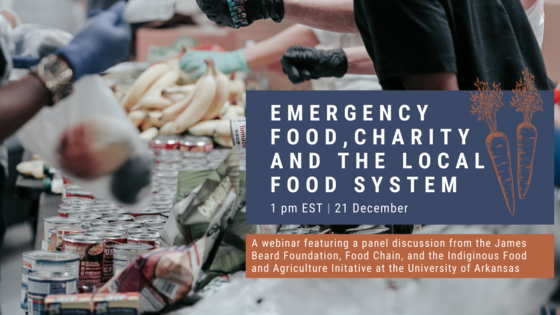 Join us on the 3rd Monday of each month for facilitated cross-sectoral discussions on topics related to local food and COVID-19, such as customer retention and engagement, emergency food, cooperative business models, state policies, and consumer behavior. Next up, on December 21, we’ll be discussing emergency food and the local food system.
Don’t worry if you have to miss a session! We have the recordings on our website. On our webinar earlier this week, we discussed retaining and engaging customers. Panelists shared how some farmers and agri-food businesses plan to address these tensions, retain these new customers, reward loyal customers, and support sustainable business enterprises.
Local and Regional Food Systems Response to COVID-19: Impact Assessments
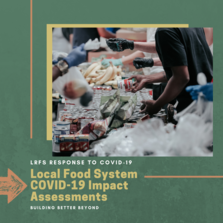
These impact statements were developed by the project’s partners. Assessments draw on listening sessions, input from other sector sources and will continue to be refined as additional data comes available.
As we look to learn about and from Tribal communities during Native American Heritage Month, read through the Indigenous Food and Agriculture Initiative’s Impact Assessment to understand how COVID-19 has impacted native-owned businesses.
|
Explore Resources for Meat Processors
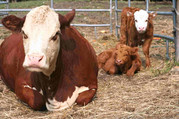
Through a cooperative research agreement between AMS and the Niche Meat Processor Assistance Network (NMPAN), 15 years of AMS funding of meat and poultry processing grant projects were analyzed to identify lessons learned and success stories. Findings from this work are shared through a final report, six case studies of grant-funded projects and four research briefs that discuss these lessons learned and recommend strategies to address these learnings.
One of the case study farms, Heart of the Valley Growers, was awarded an implementation grant through the Local Food Promotion Program to launch a meat producers cooperative to aggregate and market their product to wholesale and retail buyers. They now have six cooperative members, are selling in local markets and through wholesale orders and are actively recruiting new members.
|

The Fiscal Year (FY) 2021 Farm to School Grant Program Request for Applications (RFA) is now open! USDA Food and Nutrition Service's (FNS) Office of Community Food Systems (OCFS) seeks to award up to $10 million.
New for FY 2021, institutions operating the Child and Adult Care Food Program and Summer Food Service Program at non-school based sites are included in the definition of eligible schools and may apply for funding. Agricultural producers and groups of agricultural producers are one of the funding priorities this year. As in previous years, Indian Tribal Organizations (ITOs) and projects that serve tribal communities remain a priority group. Priority groups receive scoring incentives for meeting specific criteria. For a complete list of priority groups, please see the RFA.
The FY 2021 Farm to School Grant Program RFA includes three grant tracks: Turnkey, Implementation, and State agency. The former Planning track has been modified and wrapped into the new Turnkey track. The Turnkey track simplifies the application process for applicants interested in choosing from four projects: (1) Action Planning, (2) Agricultural Education Curriculum, (3) Edible Garden, and (4) Producer Focused Training. The Implementation and State Agency Tracks provide an opportunity for applicants to propose projects that support innovative, original ideas, and/or encompass a broader scope than the discrete, prescribed activities prescribed under the Turnkey track. Specific eligibility varies by track and project type (please see the RFA for additional eligibility requirements and details for each available track and project).
A Frequently Asked Questions document, webinars, and other helpful resources for preparing an application will be available on the FNS Farm to School Grant Applicant Resources Page. The deadline to submit an application is
January 8, 2021, 11:59 p.m. ET
|
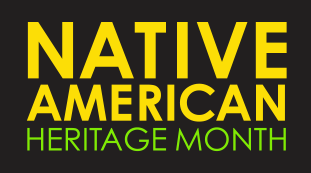
While National Native American Heritage Month has roots dating back to the early 1900s, most mark Congress’s Joint Resolution (Pub. L. 99-471) in 1986 as the origins of the celebratory month. The resolution requested the President to declare a week in November as “American Indian Week”. The President issued Presidential Proclamation 5577 as requested to honor and celebrate the original inhabitants and settlers of the United States. In 1990, the designated week was extended to the entire month of November to recognize the end of the traditional harvest season. Since 1995, the U.S. president has issued an annual proclamation declaring November Native American Heritage Month. November is a time for all Americans to reflect on the many contributions that Native Americans and Tribes have made to society including in the area of food and agriculture.
Indian agriculture looks to nourish the land and community. Many tribes are at the forefront of innovation in local and regional food systems. This is exemplified by efforts such as the Little Traverse Bay Bands of Odawa Indians, Burns Paiute tribe, and countless others. At the USDA, resources are available to support tribes in continuing to strengthen agricultural connections and projects. These resources include:
- The Office of Tribal Relations (OTR) serves as a single point of contact for Tribal issues and works to ensure that relevant programs and policies are efficient, easy to understand, accessible, and developed in consultation with the American Indians and Alaska Native constituents they impact.
- Rural Development (RD) offers a vast array of programs and services for tribes. (For examples of how RD has partnered with tribes to use these programs and services, see here.)
- At the Food and Nutrition Service (FNS), four regional offices have Tribal Affairs Specialists, who can assist tribal communities in navigating the agency’s programs and resources.
- The National Institute of Food and Agriculture (NIFA) also funds programs in Indian Country that promote learning, opportunity, and health.
- The Farm Service Agency (FSA) helps Tribes, Tribal entities, and Tribal members with land access issues through the Indian Tribal Land Acquisition Loan Program and Highly Fractionated Indian Land Loan Program.
- At AMS, Tribal governments, agricultural producers and producer networks, including those comprised of Native Americans and Alaska Natives, and many organizations that partner with tribes may apply for grants that support the development of international and domestic agriculture, including local and regional food systems.
We hope that you will take time this month to learn about the many exciting programs happening in Indian Country and USDA funding and technical assistance resources available to support these projects.
|
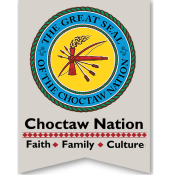
In honor of Native American Heritage Month, we are highlighting a story from the Local Food Promotion Program (LFPP) awarded to the Choctaw Nation of Oklahoma. LFPP funds projects that develop, coordinate and expand local and regional food business enterprises to help increase access to and availability of locally and regionally produced agricultural products.
The Choctaw Nation of Oklahoma utilized 2016 planning grant funds to conduct a food hub feasibility study. They contracted with SCALE, Inc to perform the study, which aimed to determine the best methods for increasing market and economic opportunities for local food. The project involved conducting surveys with farmers, Choctaw Nation employees, potential Community Supported Agriculture (CSA) customers, and wholesale buyers, as well as creating three focus groups with Choctaw Nation employees to get insights on food hubs and CSAs.
The feasibility study showed that 90% of the consumers who returned surveys were “likely” or “very likely” to use the food hub. Face-to-face meetings with producers and stakeholders supported the decision that Choctaw Nation should introduce a 3-year pilot CSA model to get the hub started and give producers adequate time to expand their production.
These plans were given to the Choctaw Nation Business Development organization, which decided that the proposed food hub should be open as a member’s service facility for all farmers in southeast Oklahoma.The study lays the groundwork for such a project to not only strengthen the local economy, but also increase access to local food for The Choctaw Nation and southeast Oklahoma.
|
|